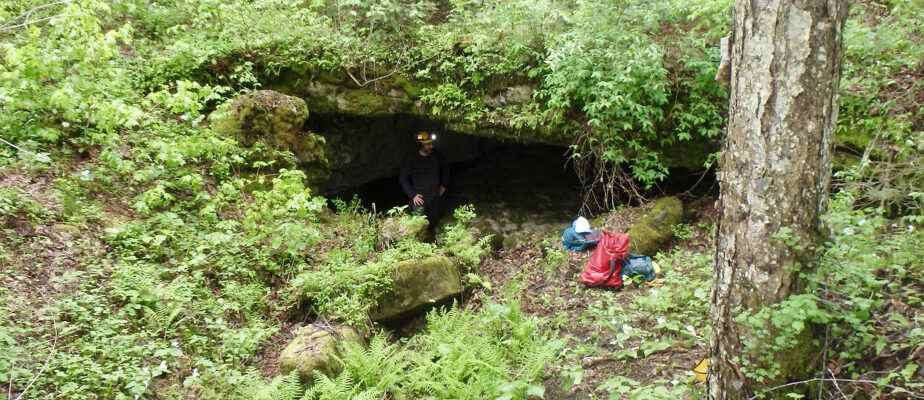Did your grandfather sometimes talk about this little cave lost in the woods? Did your cousin see a cavity while following the tracks of a deer in the middle of a forest? Spéléo Québec would like to discuss it with them.
Posted at 5:00 p.m.
“It’s part of our mission: to discover and protect all that there is as caves in Quebec, and to educate on this subject”, recalls Marie-Claude McDuff, geomatics project manager at Spéléo Québec (Quebec Speleological Society). . “Since we have existed, word of mouth has been one of our most important sources, so we are relaunching a call to try to get our reports going again. »
In the past, it basically worked like this: there were legends, anecdotes told by grandparents. It was precious. This information sometimes allowed the Quebec Speleology Society to rediscover what were often called fairy holes.
“We have a lot of archives that we are digitizing for the relocation of our office. It takes us back to the memories of the organization, it makes us see the extent of the public’s contribution. »

PHOTO MARIE-CLAUDE MCDUFF, PROVIDED BY SPELEO QUEBEC
A small hole in the ground can lead to a beautiful cave.
People’s boost
Currently, speleologists are using new technologies to unearth caves, such as LIDAR (Light Detection and Ranging) images. “These are images of the relief taken by satellites, explains Mr.me McDuff. We can superimpose this with shading effects, it allows to highlight certain relief elements which give good clues to find caves. For example, we see rivers disappear and reappear. »
Despite the advantages of new technologies, information from the population continues to be of great interest to speleologists. Michel Beaupré, geologist from Spéléo Québec, compiles the points of interest and when the opportunity arises, the members go out into the field to verify the most promising clues.
Spéléo Québec organized a research camp in the Outaouais, in the valley of the Lièvre River, during the weekend of the Fête des Patriotes. A dozen members formed themselves into teams of three or four people to scour the terrain in search of caves.
“We found one! exclaims M.me McDuff. We found what is called a collapse sinkhole, where the ground is subsiding. It revealed a porch, the entrance to a beautiful white marble cave about thirty meters. We could come out further by the resurgence of a stream. It’s a very passable cave: we weren’t standing in it, but we weren’t crawling either. »

PHOTO CLAUDE PARADIS, PROVIDED BY SPELEO QUEBEC
A beautiful marble grotto was hidden on private land in the Lièvre River Valley.
After the excitement of the start, the cavers quickly got into analysis mode: what happened here? Are there concretions? Stalactites? Stalagmites? “We haven’t seen any,” says M.me McDuff.
The speleologists, well helmeted, also make an analysis of the potential danger.
Some caves are more stable than others. That’s why when someone finds a cave, they are not encouraged to enter like that. You have to have a keen eye.
Marie-Claude McDuff, geomatics project manager at Spéléo Québec
Since the team discovered the cave on private land, Mme McDuff cannot reveal his positioning. Permission was obviously requested from the owner to explore his land. “He was curious, he didn’t know there was something penetrable. »

PHOTO PROVIDED BY SPELEO QUEBEC
One must have adequate equipment and the necessary expertise to explore an unknown cave. Better to contact Speleo Quebec.
Other side
Speleo Quebec has organized another research camp for the end of June, again in the Outaouais, but this time in the Gatineau Valley. “There are a lot of points of interest in this region, more than in regions like Estrie and the South Shore,” says Ms.me McDuff. It is linked to the geology of the territory. »
For the members of Spéléo Québec, these camps are an opportunity to meet again and exchange anecdotes. The most experienced share their knowledge with newer members. “Everyone is excited about discovering a cave, and if we don’t find anything, well, we’ll have had fun walking around in the woods. »
Suggested video
The ancestor of the mountain bike
At the end of the 1970s, a new sport appeared in California, the klunking, the art of hurtling down mountains with tough modified city bikes. This is the beginning of mountain biking.
digit of the week
7000
There are at least 7,000 pairs of peregrine falcons currently nesting in North America.

